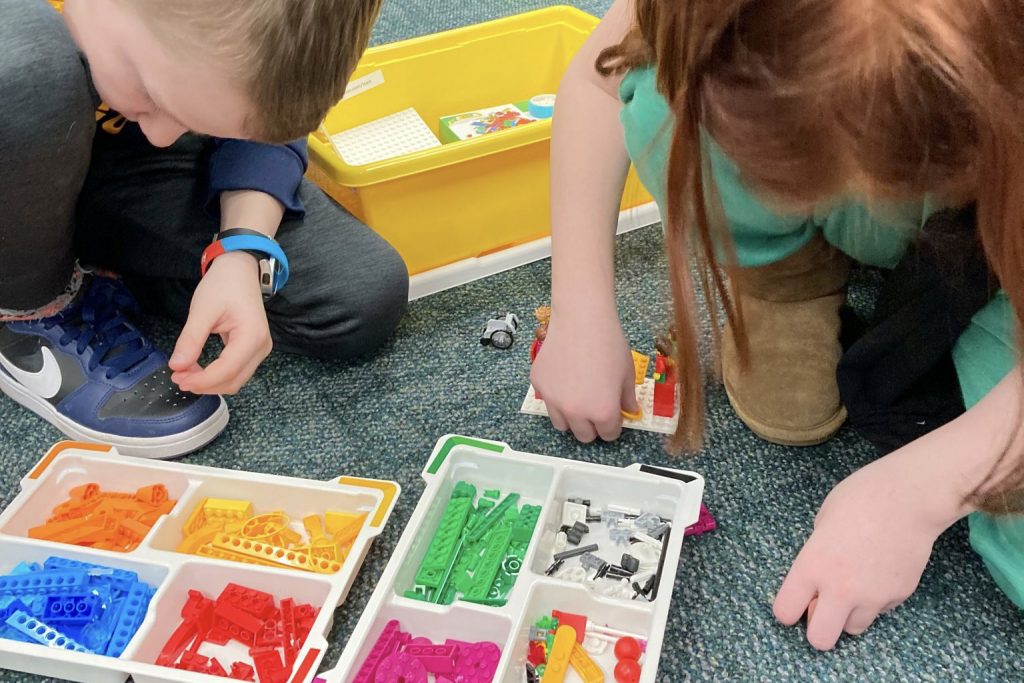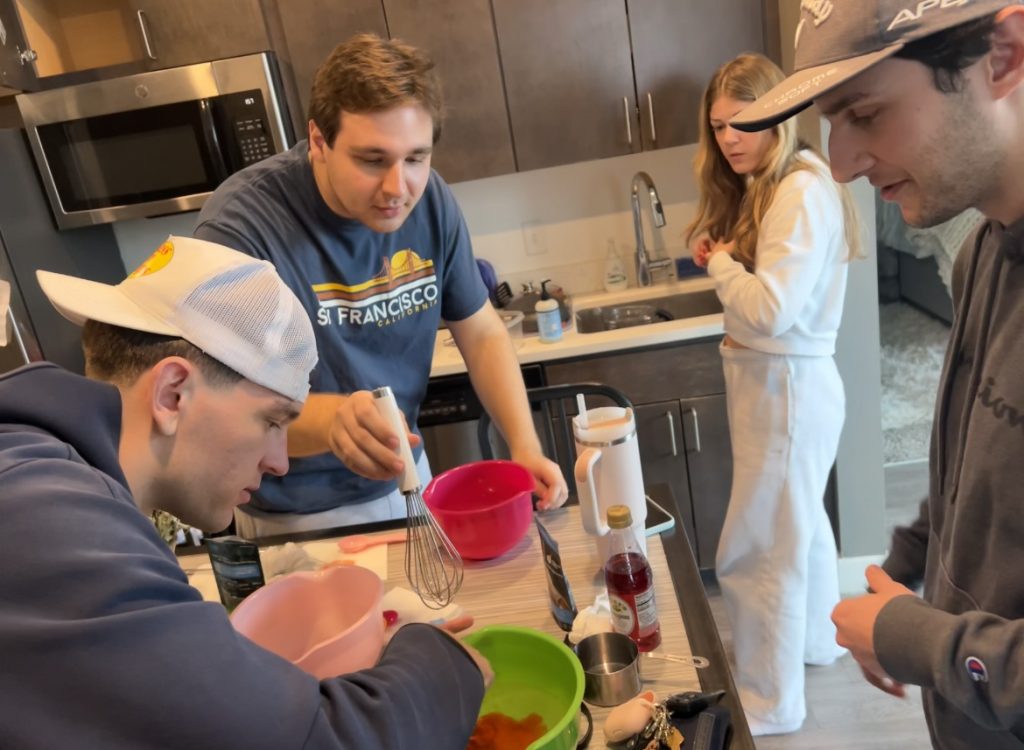Art therapy breaks social barriers through creative intervention
Art therapy brushes away social anxiety
A new approach to combating classroom anxiety is being colored into Syracuse University and local K-12 curricula, helping students of all ages.

With the effects of the pandemic still lingering in classrooms, educators have turned to creative intervention as a way to increase engagement and lessen social anxiety for everyone — from kindergarten students to college seniors.
Falling under the banner of art therapy, these unconventional activities include singing, dancing, reading, crafting and gaming, typically conducted in a group setting.
Teachers say these techniques are designed to lessen stress and improve social-emotional skills by rooting the learning in interpersonal relationships and communication.
Christine Moen said students in her third grade class at Wheeler Elementary School in Onondaga Central School District have heightened anxiety in part due to the pandemic that prevents them from being able “to socially engage with their peers during such important developmental years.”
Along with the deficit of social skills, students are also behind on technical skills like math and reading that Moen said is because they did not learn as much online as they would have in the classroom.
To address these concerns, Wheeler Elementary secured a grant to start an after-school enrichment program that combines the desire for social interaction and the need for extra help by incorporating creative activities into tutoring.
Moen pitched to school leaders an interactive Lego activity designed to connect students in a team-building exercise using the popular building block toys. She credited the program with improving student engagement and peer interaction.
“Working collaboratively, asking each other questions and getting ideas from one another, that’s the essence of education,” Moen said. She explained that students who participated in the enrichment program were kids she felt “needed that extra boost.”
Participants needed to be recommended by their teacher to ensure that the spots were filled strategically with students who needed help with learning how to interact with their peers, she said.
Moen’s Legoland semester was filled with hundreds of small building pieces that would ultimately create a robot structure that moved on its own coded by a computer. This specific enrichment provided a social factor as the groups had to work together to build these structures, while also providing technology education by teaching coding to the next generation.
Moen said the main benefit was “cooperative learning,” where students learned to be open to new people, situations and experiences.
“The kids who participated in my Lego experience were the ones who were a little more isolated, which made them less engaged with one another,” she said.
According to Moen, students left the six-week program feeling like “leaders amongst their classmates,” eager to share their newfound experiences with their peers with confidence they didn’t have before.
“The best outcome was that they would work with anybody because the activity was so exciting and so engaging,” she said. “They didn’t complain, saying, ‘I’m not going to work with that kid,’ It didn’t matter.”
Seeking success through art
Syracuse University art therapy professor Emily Goldstein Nolan said interactive games can be the vehicle children need to create meaningful relationships and branch out of their comfort zone inside and out of the classroom.
“That is exactly what they should be doing,” Nolan said. “Working in groups is a great way to break that anxious barrier.”
Nolan’s work extends to Milwaukee, Wisconsin, where she collaborates with the Success Center therapy program that serves the public school district. Nolan says there are more students participating in the Milwaukee Center’s activities since the pandemic to help curb social anxiety.
“Being able to make art, in any sense, can be soothing when mixed with incorporating positive relationships,” Nolan said.
Art therapy’s purpose is to use materials as a beacon to bring a student’s nervous system back into regulation, Nolan says. For example, painting with watercolor allows students to engage “a really beautiful process,” she said.
“The back and forth motion with the watercolor sticks parallels a soothing motion, which allows the sensory channels to open and support nervous system regulation,” Nolan explained.
“Being able to make art, in any sense, can be soothing when mixed with incorporating positive relationships.” – Emily Goldstein Nolan
Wheeler Elementary teacher Maggie Lenkiewicz uses music to culminate a relaxing classroom setting for students. She says the key is to create an environment where “the students don’t feel pressure to act a certain way.”
“Students from this district will reap the benefits of our efforts,” Lenkiewicz said. “I fear other schools may ignore how important communication really is.”
Whitman’s Ways: Team building and creative intervention
Educators in SU’s Whitman School of Management experienced similar results with students when they transitioned learning from a lecture-test-lecture-test schedule towards a more engaging and interactive teaching strategy.
While the classes are not explicitly labeled as art therapy, the learning principles are comparable, with a focus on creative techniques to enhance classroom engagement, benefiting both relationships and test scores.
Management professor Elizabeth Wimer said students in her Managing in a Global Setting course “want to make connections, but have forgotten how.” Her goal is to give students the chance to interact with peers.
Wimer designed the management class to include group projects where she selects the groups to collaborate on commercials, posters, videos and other creative content.
Accounting and real estate senior Gavin McCaul credits the class with introducing him to many students because of “the random nature of the assigned groups.”
McCaul said the projects were time-intensive but beneficial. Through the class, he found a new group of friends who began to coordinate their class schedules to study together.
“While I learned a lot about global business, I was also having a lot of fun, which is not something I typically would say for a class that required so much effort,” McCaul said.
Entrepreneurial practice professor Ken Walsleben oversees Whitman students in the capstone course, where student groups develop a new product and craft a comprehensive 50-page business plan covering financials, marketing, supply-chain logistics and advisory boards. The course concludes with a presentation to pitch their idea before a group of judges in a Shark Tank-like competition.
Walsleben says the course “fosters greater innovation, ideation, and avoids debilitating ‘groupthink’” that’s also referred to as “creative abrasion.”

Finance senior Sydney Jones’ group, the “EcoSuds,” created a product called the EcoPod that provides a rinse-less soap solution for communities without access to a clean water supply to easily wash their hands.
Jones said Walsleben’s capstone class was challenging and time-consuming, but rewarding.
“It felt like I was doing an art project with my friends,” she said. “We had such a good time creating a real-life model of what we had been thinking about for months. It was really cool to see and experience.”
